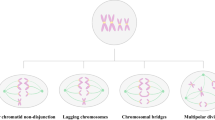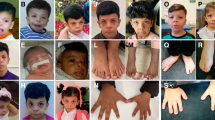Abstract
The Thp mutation, an allele of the mouse T/t complex, differs from other known mutations in that its effects are determined by the sex of the parent from which it is inherited; when inherited from the female parent, it is invariably lethal at the embryonic stage, but, most embryos which inherit the mutation from the male parent survive1,2. Thus most heterozygous embryos carrying the maternally derived mutation die in the second half of pregnancy, while the exceptional embryos surviving to parturition give oedematous, cyanotic individuals that die within 24 h3,4. The lethal maternal effect of Thp may be transmitted either through the cytoplasm of the ovum (oogenic defect) or through the female pronucleus (embryogenic defect). Here we have sought to decide between these possibilities by performing reciprocal nuclear transplantations5 between one-cell embryos from Thp/+ and +/+ females. Our observation that this maternally inherited lethal effect of Thp persists when Thp/+ pronuclei are transplanted into +/+ cytoplasm suggests that the defect responsible for the pattern of inheritance lies in the pronuclei and not the cytoplasm.
Similar content being viewed by others
References
Dickie, M. M. Mouse Newslett. 32, 43–44 (1965).
Johnson, D. R. Genetics 76, 795–805 (1974).
Johnson, D. R. Genet. Res. 24, 207–213 (1975).
Alton, A. thesis, Cornell Univ. (1982).
McGrath, J. & Solter, D. Science 220, 1300–1302 (1983).
McLaren, A. in Maternal Effects in Development (eds Newth, D. R. & Balls, M. ) 287–320 (Cambridge University Press, 1979).
Lyon, M. F. & Glenister, P. H. Genet. Res. 29, 83–92 (1977).
Bennett, D. et al. Genet. Res. 26, 95–108 (1975).
Silver, L. M., Artzt, K. & Bennett, D. Cell 17, 275–284 (1979).
Whitten, W. K. Adv. Biosci. 6, 129–139 (1971).
Abramczuk, J., Solter, D. & Koprowski, H. Devl Biol. 61, 378–383 (1977).
Author information
Authors and Affiliations
Rights and permissions
About this article
Cite this article
McGrath, J., Solter, D. Maternal Thp lethality in the mouse is a nuclear, not cytoplasmic, defect. Nature 308, 550–551 (1984). https://doi.org/10.1038/308550a0
Received:
Accepted:
Issue Date:
DOI: https://doi.org/10.1038/308550a0
- Springer Nature Limited
This article is cited by
-
Genomic imprinting: the emergence of an epigenetic paradigm
Nature Reviews Genetics (2011)
-
Reproductive capacity of the nucleus of the male gamete after completion of meiosis
Journal of Assisted Reproduction and Genetics (1994)
-
The mouse insulin-like growth factor type-2 receptor is imprinted and closely linked to the Tme locus
Nature (1991)
-
Genomic imprinting: A gene regulatory phenomenon with important implications for micromanipulation-assisted in vitro fertilization (IVF)
Journal of In Vitro Fertilization and Embryo Transfer (1991)
-
Maternal inhibition of hepatitis B surface antigen gene expression in transgenic mice correlates with de novo methylation
Nature (1987)





